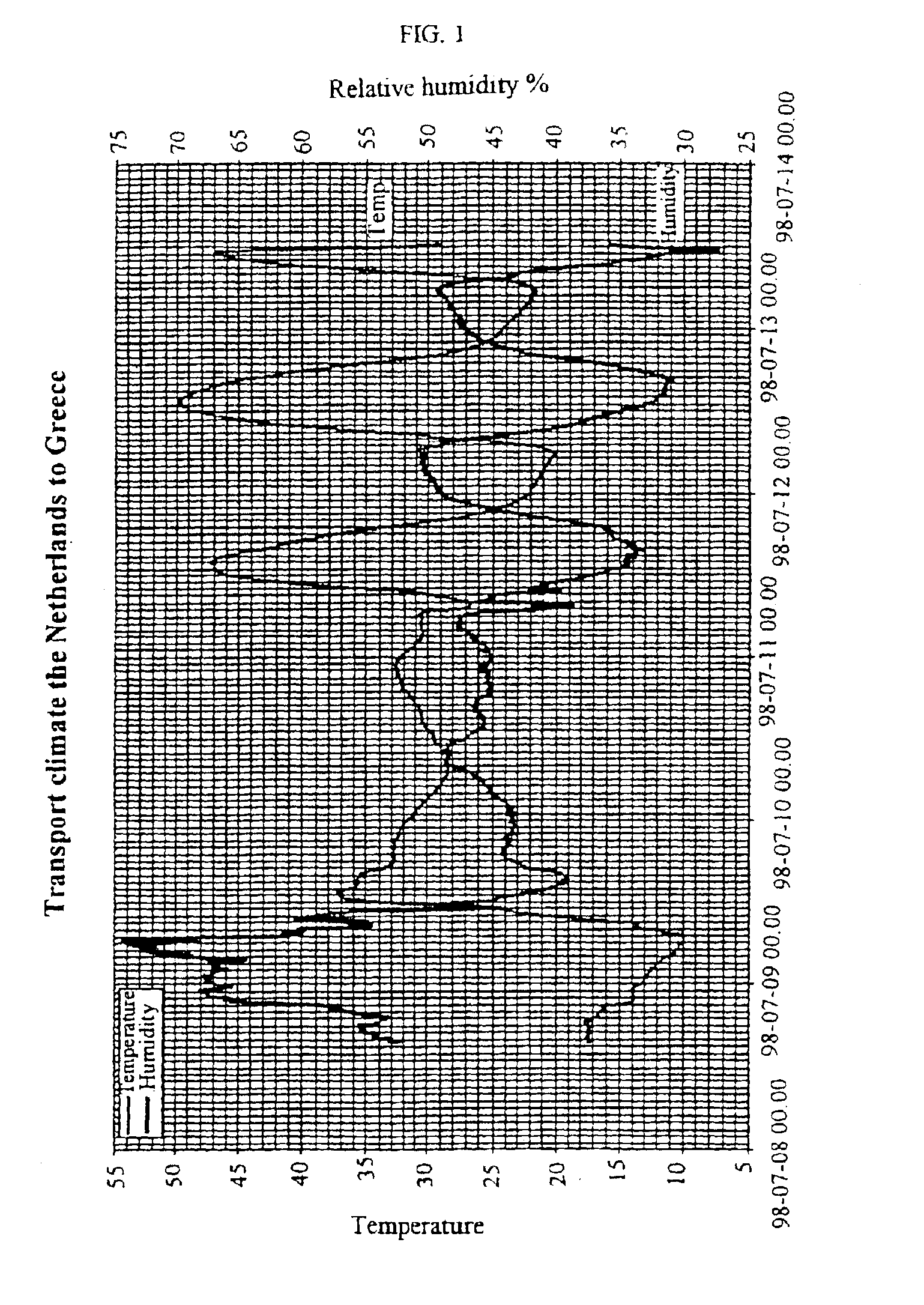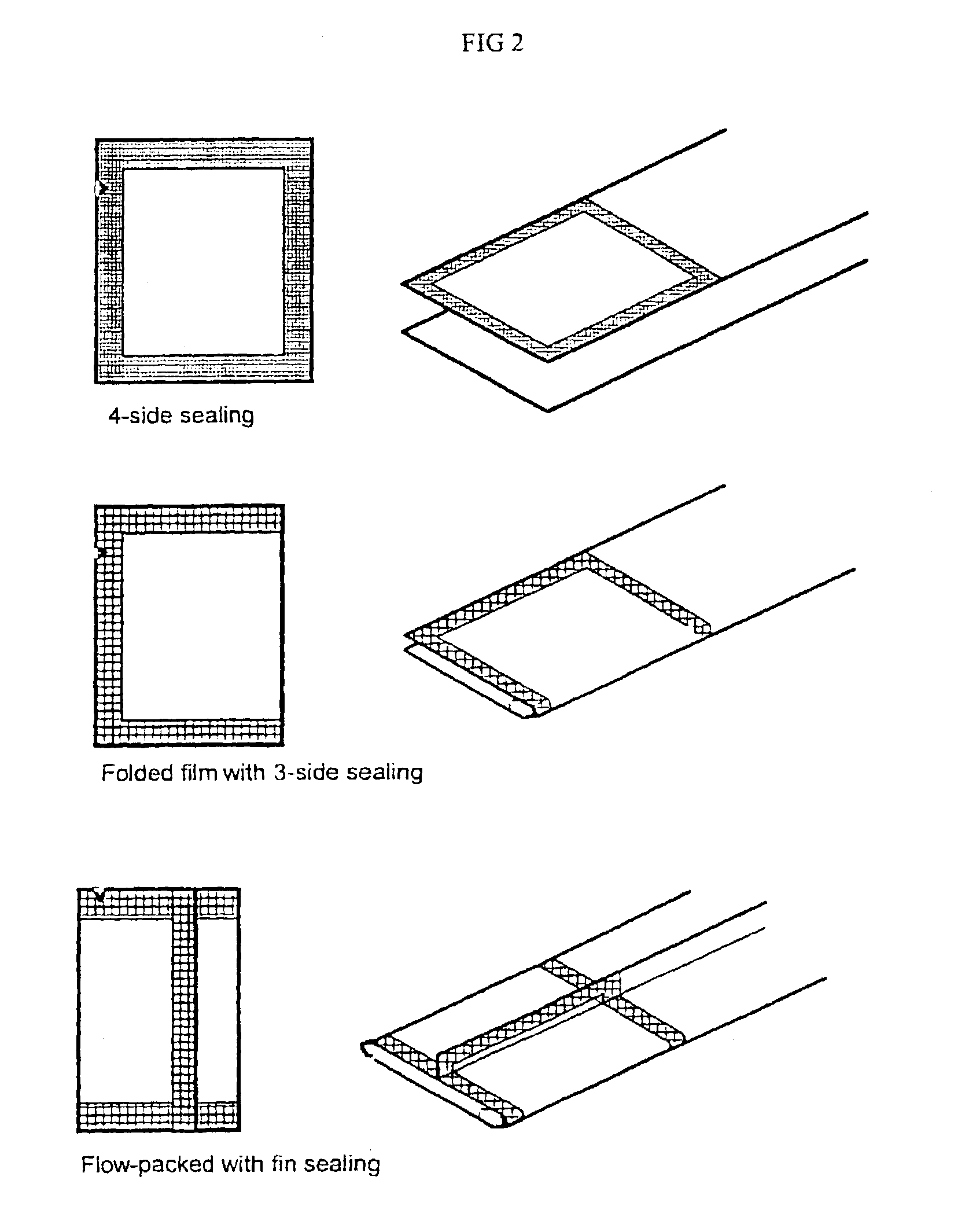Use of moisture impervious packaging units and package for absorbent articles comprising moisture-sensitive additives
a technology of absorbent articles and packaging units, which is applied in the direction of flexible covers, containers, tray containers, etc., can solve the problems of loosening some of their properties or effectiveness, difficult to produce tight joints, and affecting the quality of absorbent products, so as to achieve the effect of retaining the quality of the produ
- Summary
- Abstract
- Description
- Claims
- Application Information
AI Technical Summary
Benefits of technology
Problems solved by technology
Method used
Image
Examples
example 1
Transport Conditions
This example shows how temperature and air humidity vary in the storage space during transportation of sanitary products (FIG. 1) from Holland to Greece. The Figure shows that the relative humidity varies from 27-75% and the temperature varies from 1050° C.
example 2
The affect of Moisture on the Lifetime of Lactobacilli
FIG. 3 illustrates the survival time of lactobacilli that have been applied to a panty liner in a permeable minigrip-type bag in different humidity conditions (30% and 50% respectively). Lactobacilli quickly die in a normal climate (20° C., 50% relative humidity) (FIG. 3). These conditions correspond to a water content of an airlaid article material of about 4 percent by weight. The lactobacilli survive far better at a lower moisture content (20° C., 30% relative humidity) (FIG. 3). The airlaid material has a water content of about 3 percent by weight in this climate.
example 3
The following working examples demonstrate the possibility of subsequently drying the material with the aid of a suitable desiccator. Commercially available panty liners retailed under the trademark Libresse were stored in a normal room climate of 20° C. and 44% humidity. The water content of the products was measured with a hygrometer that included IR elements (IR oven MA 40, manufacturer Sartorius, purchased from Tillqvist Analys) and found to be 4 percent by weight. The products were then packed singly in impervious aluminium bags together with two different types of desiccant, silica gel, so-called blue gel (silica gel 1-3 mm, Prolab, purchased from KeboLab, Art. No. 27661290) on the one hand and zeolite MOLSIV ADSORBENT type 13X in powder from United Oil Products on the other hand. Different quantities of powder were added, whereafter the samples were stored in a normal room climate (see above) for two calendar days. After two calendar days, the panty liners were taken...
PUM
| Property | Measurement | Unit |
|---|---|---|
| thickness | aaaaa | aaaaa |
| thickness | aaaaa | aaaaa |
| thickness | aaaaa | aaaaa |
Abstract
Description
Claims
Application Information
 Login to View More
Login to View More - R&D
- Intellectual Property
- Life Sciences
- Materials
- Tech Scout
- Unparalleled Data Quality
- Higher Quality Content
- 60% Fewer Hallucinations
Browse by: Latest US Patents, China's latest patents, Technical Efficacy Thesaurus, Application Domain, Technology Topic, Popular Technical Reports.
© 2025 PatSnap. All rights reserved.Legal|Privacy policy|Modern Slavery Act Transparency Statement|Sitemap|About US| Contact US: help@patsnap.com



